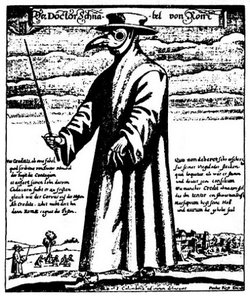The disease tore through Europe, the Middle East and northern Africa, in some cases claiming up to 60 percent of the population. It resurged throughout the next 500 years.
The origins of the Black Death have long been debated, because it is not a disease of humans, the Yersinia pestis bacterium survives within wild rodent populations across the world, in so-called plague reservoirs. A new study pieced together complete ancient plague genomes from sites in Kyrgyzstan to get answers. “We found that the ancient strains from Kyrgyzstan are positioned exactly at the node of this massive diversification event. In other words, we found the Black Death’s source strain and we even know its exact date [meaning the year 1338],” says Maria Spyrou, lead author and researcher at the University of Tübingen.

The ancient Central Asian strain that caused the 1338-1339 epidemic around Lake Issyk Kul must have come from one such reservoir. “We found that modern strains most closely related to the ancient strain are today found in plague reservoirs around the Tian Shan mountains, so very close to where the ancient strain was found. This points to an origin of Black Death’s ancestor in Central Asia,” explains Johannes Krause, senior author of the study and director at the Max Planck Institute for Evolutionary Anthropology.
Excavations that took place almost 140 years ago revealed tombstones indicating that individuals died in those years of an unknown epidemic or “pestilence”. Since their first discovery, the tombstones inscribed in Syriac language, have been a cornerstone of controversy among scholars regarding their relevance to the Black Death of Europe.
In this study, an international team of researchers analyzed ancient DNA from human remains as well as historical and archaeological data from two sites that were found to contain “pestilence” inscriptions. The team’s first results were very encouraging, as DNA from Yersinia pestis was identified in individuals with the year 1338 inscribed on their tombstones. “We could finally show that the epidemic mentioned on the tombstones was indeed caused by plague,” says Phil Slavin, one of the senior authors of the study and historian at the University of Sterling, UK.





Comments